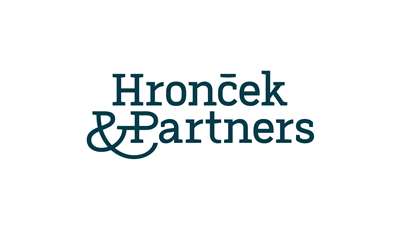We have already presented various aspects of public procurement in previous articles. Competent persons within the meaning of the Public Procurement Act ensure the purchase of goods, services, and construction work within the limits of legal rules so that the highest quality is achieved at the lowest possible cost. But what about public procurement in the healthcare sector?

First, it's worth remembering that public procurement is a really important tool that lets the state and public authorities do their main jobs, since it's how they get the stuff they need to function. In very simple terms, it can be said that the state, public authorities and other persons within the meaning of the Public Procurement Act use public procurement to purchase goods, services and construction works within the limits of the law in order to achieve the highest possible quality at the lowest possible cost. The category of goods within the meaning of CPV (Common Procurement Vocabulary) codes 33000000-0 to 33698300-12 also includes medical equipment, medicines - pharmaceutical materials and personal care products. Even though these are very specific materials and goods, it is necessary to procure them in accordance with the Public Procurement Act, without exception. However, is public procurement a flexible enough tool to cope with the high specificity of these goods? In this article, we will try to explain the pitfalls of procurement in healthcare to the general public.
Procurement in healthcare
Entities that fall under the criteria established for public contractors under Section 7 or Section 8, or contractors under Section 9 of Act No. 343/2015 Coll. on public procurement and on amendments and supplements to certain acts (hereinafter referred to as the “Public Procurement Act”). The basic defining criterion is therefore the need to distinguish between a private entrepreneur operating a facility where healthcare is provided and an entity that meets the defining characteristics of a public contracting authority/contracting entity. This is important because private healthcare facilitiesare not subject to any restrictions on contractual freedom and are not covered by the Public Procurement Act, which means they are free to choose their contractual partners. On the other hand, public healthcare facilities must proceed in the manner laid down by the Public Procurement Act. The most common public contracting authorities will be state hospitals, the Ministry of Health or the General Health Insurance Company.
It follows from the logic of the matter that in the healthcare sector, quality should be the most important factor in the procurement process, not the lowest price. However, the opposite is true, as the vast majority of medicines and medical equipment are procured through electronic auctions, where the criterion for evaluating bids is the lowest price. However, this is related to the fact that, under both national and Community legislation, there are regulatory authorities responsible for the control of medicinal products, namely the State Institute for Drug Control in Slovakia and the European Medicines Agency (EMA). The purpose of these entities is to ensure the safety and quality of medicinal products and pharmaceutical products, and therefore, in the procurement procedure, it is up to the contracting authority to determine which categories of medicinal products and active substances it needs, which have already undergone a quality approval and monitoring process, and therefore public contracting authorities do not use quality as an evaluation criterion. As regards medical devices, their manufacture and entry onto the market are not subject to the same scrutiny as in the case of medicinal products, as the risks arising from poor quality or other defects in medical devices are not as catastrophic as in the case of medicinal products. On the other hand, however, it must be noted that the quality of medical devices is no less important. In this context, the question arises as to whether procurement through electronic auctions with the sole evaluation criterion of the lowest price is the optimal way for individual contracting authorities to ensure sufficient quality, particularly in relation to medical devices. Furthermore, given the specific nature of the goods supplied, it is difficult to ensure broad economic competition and, at the same time, to achieve the desired level of innovation.
It is precisely the elements of innovation, quality and economic competition that pose the greatest challenge for public procurers in the field of public procurement. In public procurement, it is difficult to take into account the effectiveness of individual devices, their long-term effects, the overall cost of treatment, and the individual requirements of a given patient, which can be very specific from case to case.
Large-scale centralised procurement at national level may save the state several million euros, but it is questionable and debatable whether the above-mentioned and many other specific features of the healthcare sector are reflected in this type of procurement. In the healthcare sector, it is also necessary to take into account intellectual property rights, in particular patents directly related to the issue of generic drugs on the one hand and original, so-called innovative drugs on the other. This issue is also directly related to the pricing of individual drugs. The issue of procuring expensive original drugs that are still under patent protection is a pressing trend even in wealthy Western EU Member States, with some countries calling for compulsory licensing, which would mean simplified market access for generic drug manufacturers. It is precisely the wealthy EU member states that are the middlemen in the market share of generic drugs, thereby seeking to reduce healthcare procurement costs. However, it should not be forgotten that the manufacturers of original drugs are the middlemen of innovation, research and progress. These and other specific factors, such as greater transparency and cost-effectiveness, are the main arguments put forward by supporters of so-called joint Community procurement, as can currently be seen in the procurement of vaccines against COVID-19.
One of the biggest problems in public procurement in healthcare is low competition. In practice, public procurement procedures with only one bidder are relatively common. In the last five years, approximately one third of public procurements have been of this type, with the result that there has been no real competition between bidders in such public procurements. Low participation in public procurement may be due to several factors. The above-mentioned intellectual property rights are directly related to the level of competition in individual contracts, as while patent protection is in force, only one entity, namely the manufacturer of the original medicine, can participate in the competition.
It follows from the above that procurement in healthcare is a very specific part of the public procurement system and should therefore be given increased attention and, in particular, increased requirements for the expertise of entities and their staff involved in healthcare procurement. In the public procurement process itself, the price-quality ratio should prevail, with a precise and professional description of the subject of the contract, and in this regard it would be appropriate to make greater use of special public procurement procedures such as negotiated procedures with publication, competitive dialogue and innovative partnerships, which are relatively new additions to the award of contracts under the Public Procurement Act.
In this article, we have outlined only some of the specific features and unique elements of procurement in the healthcare sector, while individual countries face other challenges due to the rapidly evolving healthcare sector, not to mention the significant complications caused by the COVID-19 pandemic. Closely related to public procurement of medicines is the categorization of medicines and their pricing, which appears to be cumbersome in the Slovak Republic, while parallel imports of medicines are also heavily regulated, which is linked to the considerable restrictions on the flexibility of pharmaceutical product pricing. In this context, we will continue to monitor developments in public procurement in healthcare, and in the near future we expect greater cooperation at the community level. The main task of the state in the area of procurement is to move forward in such a way that patients receive innovative and high-quality treatment at a reasonable price.
